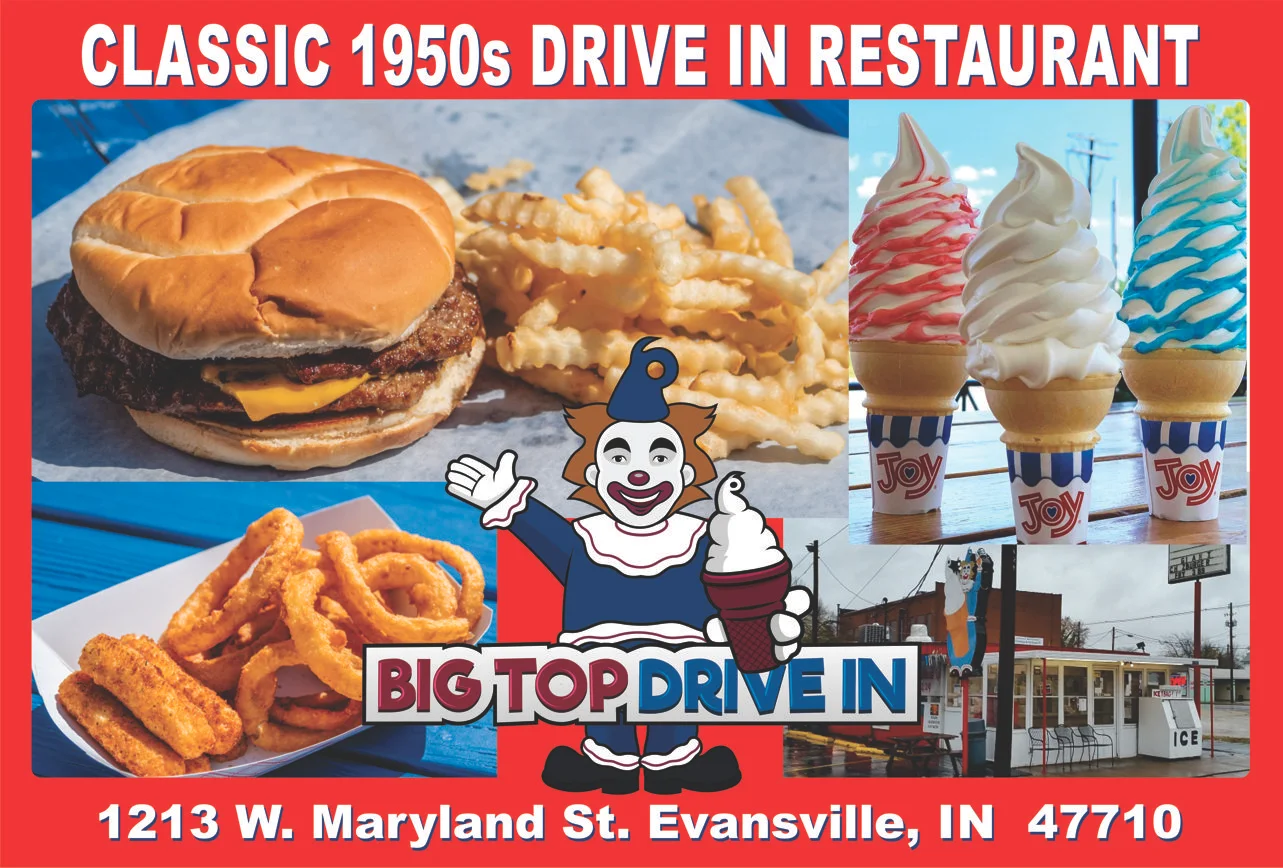Soft serve ice cream goes sustainable: how chefs are sourcing responsibly without sacrificing flavor
Discovering the Latest Patterns in Food Service: What Restaurants Are Offering Today
The landscape of food solution is developing quickly. Restaurants are adjusting to customer demands for much healthier and more lasting choices. Plant-based food selections are becoming a staple. Modern technology is improving exactly how restaurants interact with their meals. Meanwhile, ghost kitchens are obtaining grip in the distribution sector. As these fads unravel, the ramifications for both diners and restaurateurs come to be increasingly complicated. What does this mean for the future of eating experiences?
The Increase of Plant-Based Menus
As customers increasingly prioritize health and wellness and sustainability, the increase of plant-based menus has become a noticeable trend in the food service market. Restaurants are progressing to fulfill the expanding demand for meat-free options, offering ingenious meals that interest both vegetarians and flexitarians. Cooks are explore diverse components, making use of grains, beans, and veggies to develop savory and aesthetically appealing dishes (Tenderloins). This shift is not only regarding satisfying nutritional choices yet also regarding advertising health and environmental responsibility.The growth of plant-based menus can be seen throughout numerous eating establishments, from casual eateries to upscale restaurants. Lots of consumers now seek openness in their food choices, driving facilities to highlight the nutritional benefits of plant-based offerings. Furthermore, the rise of plant-based meat options has actually made it simpler for dining establishments to include these options without endangering taste or structure, further solidifying the pattern's location in the modern culinary landscape
Emphasis on Sustainable Sourcing
The food service market is significantly prioritizing lasting sourcing, showing a growing awareness of environmental impacts. Collaborations with neighborhood farms and the incorporation of seasonal menu offerings are vital methods that establishments are adopting. These practices not only support local economic climates yet likewise enhance the freshness and quality of food offered.

Regional Farm Partnerships
An expanding number of food service facilities are creating partnerships with neighborhood ranches to boost their menus and promote lasting sourcing. These collaborations provide restaurants with fresher components while minimizing and sustaining local economies carbon impacts linked with transportation. By sourcing produce, meats, and milk from neighboring farms, restaurants can use seasonal and premium meals that resonate with environmentally-conscious customers. Additionally, these collaborations often enable cooks to work together straight with farmers, cultivating openness concerning sourcing techniques and ingredient high quality. This pattern not only raises the dining experience however likewise stresses the importance of sustainability in the food solution market. Therefore, customers progressively seek dining establishments that focus on neighborhood ranch partnerships, showing a more comprehensive shift towards liable dining choices.
Seasonal Menu Offerings
Several restaurants are embracing seasonal menu offerings to highlight the freshness and top quality of active ingredients sourced sustainably. This trend permits chefs to create dynamic dishes that show the transforming periods, using local fruit and vegetables at its top taste. By partnering with local farmers, establishments can guarantee that their components are not only fresh yet also eco responsible. Seasonal food selections frequently consist of things like springtime peas, summertime tomatoes, fall squash, and winter months environment-friendlies, showcasing the variety of each season's bounty. This strategy not just boosts the eating experience however also supports regional agriculture and minimizes the carbon footprint associated with food transport. As a result, diners significantly appreciate food selections that straighten with their values of sustainability and seasonal eating.
Modern Technology Assimilation in Dining Experiences
The integration of technology in dining experiences is progressively changing how clients connect with dining establishments. Contactless ordering systems and interactive menu displays are ending up being crucial tools that improve convenience and involvement. As these innovations progress, they improve customer expectations and functional efficiencies within the food service market.
Contactless Purchasing Systems
Contactless purchasing systems have swiftly changed eating experiences, propelling benefit and safety to the center of food service trends. These systems permit clients to location orders via smart devices or kiosks, reducing physical contact with staff and food selections. As dining establishments adapt to advancing consumer preferences, contactless solutions improve efficiency, lowering wait times and improving solution. In addition, they give a hygienic alternate amidst recurring health and wellness concerns, fostering a complacency for diners. Several facilities currently incorporate payment choices within these systems, additionally simplifying purchases and boosting the general experience. By accepting technology, restaurants not only fulfill consumer expectations but likewise place themselves competitively in a rapidly altering landscape, showing a substantial change in the direction of up-to-date dining practices.
Interactive Menu Shows
How can interactive food selection screens raise the dining experience? These ingenious tools offer restaurants an interesting means to explore menu choices, enabling a much more tailored experience. By incorporating touchscreens, clients can browse recipes, view high-resolution pictures, and gain access to detailed descriptions, consisting of dietary information and component sourcing. This interactivity motivates notified decision-making and boosts customer contentment. Furthermore, restaurants can quickly update menus in genuine time, showcasing seasonal specials or things that might be running reduced. Interactive display screens can likewise integrate consumer comments systems, permitting diners to rate their dishes straight. In general, these technical advancements not only enhance the ordering procedure yet additionally foster a deeper connection in between diners and the cooking offerings, making eating in restaurants an extra immersive experience.
Special and Thematic Restaurant Concepts
As restaurants progressively look for memorable experiences along with their meals, thematic and one-of-a-kind restaurant principles have actually gained significant appeal in the food solution market. These establishments exceed conventional eating by immersing guests in distinct themes that enhance the total experience. From middle ages receptions to futuristic dining, themed dining establishments produce an ambience that moves clients to different worlds, making each visit an adventure.Culinary creativity plays an important role in these principles, usually featuring menus that straighten with the style, using innovative presentations and tastes to astound diners. Furthermore, components such as style, team costumes, and interactive experiences add to a cohesive narrative that maintains consumers engaged.The increase of social media has better sustained this fad, as customers share their distinct eating experiences online, enticing others to check out. As an outcome, unique and thematic dining establishment concepts proceed to prosper, dealing with the contemporary customer's wish for both food and entertainment.
Ghost Kitchens and Delivery-Only Models
With the increase of on the internet food shipment solutions, ghost kitchen areas and delivery-only designs have arised as a transformative pattern in the food service market. These ideas operate without a typical eating room, concentrating entirely on food prep work for shipment. By removing the costs related to preserving a physical dining establishment, operators can allot sources toward food quality, menu development, and advertising strategies.Ghost cooking areas typically house numerous brand names under one roof, enabling diverse cooking offerings from a solitary location. This version not only lowers expenses however likewise provides adaptability to react to changing consumer choices swiftly. As metropolitan locations come to be saturated with dining options, delivery-only designs deal with the increasing need for benefit and rate.
Health-Conscious and Useful Foods
While customer choices remain to develop, the demand for useful and health-conscious foods has surged, mirroring a growing recognition of nourishment and health. Dining establishments are progressively including active ingredients rich in nutrients, such as superfoods, plant-based healthy proteins, and entire grains, accommodating patrons looking for healthier alternatives. Food selection items usually highlight details benefits, such as immunity-boosting homes or boosted energy levels, attracting consumers' needs for foods that promote general health. Additionally, transparency in sourcing and ingredient lists has ended up being extremely important, as diners increasingly choose dishes made from organic, locally sourced parts. Several establishments are currently supplying adjustable meals that enable guests to choose ingredients based on nutritional requirements, such as gluten-free or low-carb alternatives. This fad not just fulfills the developing wellness requirements but likewise fosters a click here more tailored dining experience, making certain that restaurants continue to be affordable in a quickly changing food landscape.
Experiential Dining: Past home plate
Experiential eating goes beyond standard meal usage, transforming food right into a multifaceted event that involves all the senses. Restaurants are progressively curating immersive experiences that go beyond taste, including components such as atmosphere, interactive presentations, and themed settings. This fad shows a need for remarkable trips, where restaurants seek not just nourishment but additionally link and entertainment.Innovative chefs are trying out sensory pairings, such as soundscapes and visual art, to boost the dining experience. Many establishments supply interactive eating alternatives, permitting visitors to participate in the cooking procedure or tailor their dishes. Additionally, storytelling plays a vital function, with menus designed to communicate the journey of the active ingredients from farm to table.This change towards experiential eating highlights a growing consumer choice for unique, appealing minutes that promote a deeper admiration of food and the culinary arts, ultimately redefining the boundaries of standard eating.
Often Asked Questions
Exactly How Are Restaurant Personnel Adapting to New Food Solution Trends?
Restaurant team are adapting to new food service fads by accepting innovation, improving consumer communications, and branching out food selections. Training programs concentrate on dexterity and innovation, making certain staff members meet developing customer choices and market challenges effectively.
What Impact Do These Trends Carry Food Rates?
The effect of evolving food solution fads on food prices is considerable. Raised demand for top quality ingredients and sustainable sourcing usually leads to greater costs, inevitably affecting menu pricing and customer costs actions in the restaurant sector.
Just How Are Client Preferences Transforming in Response to These Patterns?
Customer preferences are moving in the direction of healthier, lasting options, driven by a growing awareness of nutritional influences. Additionally, ease and personalization have come to be crucial, leading customers to seek special dining experiences that align with their lifestyles and values.

What Obstacles Do Restaurants Face in Implementing These Trends?
Restaurants experience numerous obstacles when applying new trends, including climbing operational costs, supply chain disruptions, labor force scarcities, and the demand for staff training (Diner near me). These factors complicate the adaptation procedure, frequently impeding efficient execution of cutting-edge concepts
Are These Fads Influencing Food Waste Management in Restaurants?
The fads observed in the dining establishment sector significantly influence food waste administration approaches. Numerous establishments are taking on innovative methods to minimize waste, utilizing modern technology and sustainable sourcing to boost effectiveness and reduce ecological effect. As diners progressively seek memorable experiences alongside their dishes, thematic and unique restaurant concepts have actually gotten considerable appeal in the food solution market. With the increase of on the internet food distribution solutions, ghost kitchen areas and delivery-only versions have emerged as a transformative pattern in the food service market. By eliminating the costs connected with preserving a physical dining establishment, drivers can allocate sources toward food high quality, menu advancement, and marketing strategies.Ghost kitchens usually house multiple brand names under one roof covering, enabling for varied cooking offerings from a single location. Restaurant staff are adapting to brand-new food solution patterns by welcoming technology, boosting client interactions, and expanding menus. The influence of progressing food solution fads on food costs is considerable.